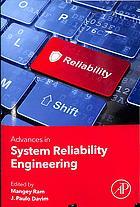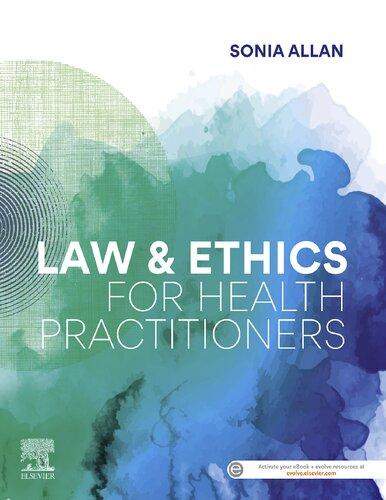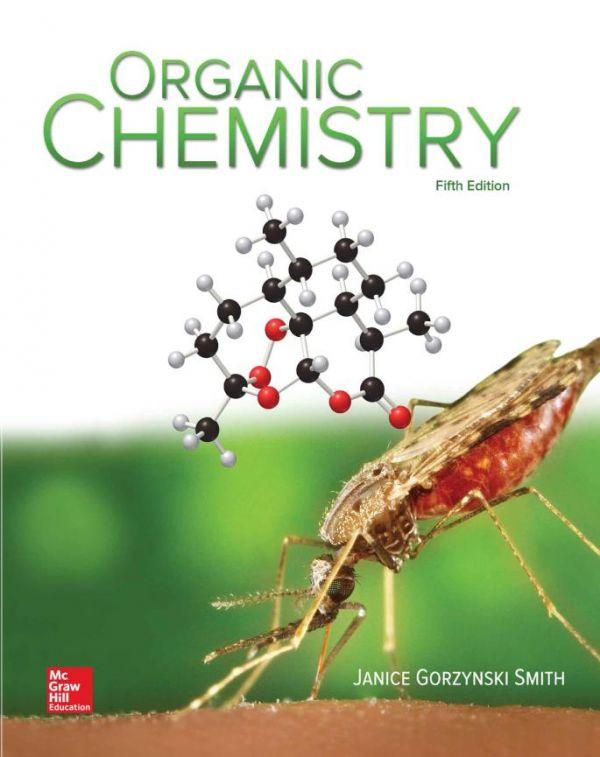CONTRIBUTORS
MohiniAgrawal
SchoolofBusiness,GalgotiasUniversity,GreaterNoida,India
AdarshAnand
DepartmentofOperationalResearch,UniversityofDelhi,NewDelhi,India
AlessandroBarbiero
DepartmentofEconomics,ManagementandQuantitativeMethods,Università degliStudi diMilano,Milan,Italy
NavneetBhatt
DepartmentofOperationalResearch,UniversityofDelhi,NewDelhi,India
F.DeCaro
DepartmentofEngineering,UniversityofSannio,Benevento,Italy
LirongCui
SchoolofManagement&Economics,BeijingInstituteofTechnology,Beijing,China
Ant ^ onioCarlosLopesdaCosta
CentrodeDesenvolvimentodaTecnologiaNuclear—CDTN,BeloHorizonte,Brazil
VanderleydeVasconcelos
CentrodeDesenvolvimentodaTecnologiaNuclear—CDTN,BeloHorizonte,Brazil
ChenFang
SchoolofManagement&Economics,BeijingInstituteofTechnology,Beijing,China
SoufianeGasmi
Optimization,ModelingandDecisionSupport(OMAD),UniversityofTunis—Tunis NationalHigherSchoolofEngineering,Tunis,Tunisia
MiroslavKvassay
DepartmentofInformatics,UniversityofZilina,Zilina,Slovakia
DongjinLee
SchoolofComputing,Informatics,andDecisionSystemsEngineering,ArizonaState University,Tempe,AZ,UnitedStatesofAmerica
PreetiMalik
DepartmentofComputerScienceandEngineering,GraphicEraDeemedtobeUniversity, Dehradun,India
MonikaManglik
DepartmentofMathematics,UniversityofPetroleum&EnergyStudies,Dehradun,India
LataNautiyal
DepartmentofComputerScienceandEngineering,GraphicEraDeemedtobeUniversity, Dehradun,India
RongPan
SchoolofComputing,Informatics,andDecisionSystemsEngineering,ArizonaState University,Tempe,AZ,UnitedStatesofAmerica
BrianA.Polin
JerusalemCollegeofTechnology,Jerusalem,Israel
LudmilaPustylnik
DepartmentofMechanicalEngineering,AfekaTel-AvivAcademicCollegeofEngineering, TelAviv,Israel
JanRabcan
DepartmentofInformatics,UniversityofZilina,Zilina,Slovakia
MangeyRam
DepartmentofMathematics,ComputerScience&Engineering,GraphicEraUniversity, Dehradun,India
AmandaLaureanoRaso
CentrodeDesenvolvimentodaTecnologiaNuclear—CDTN,BeloHorizonte,Brazil
AlexanderRotshtein
DepartmentofIndustrialEngineering,JerusalemCollegeofTechnology,Jerusalem,Israel
PatrikRusnak
DepartmentofInformatics,UniversityofZilina,Zilina,Slovakia
LuisMejiaSanchez
CumminsInc.,Columbus,IN,UnitedStatesofAmerica
WellingtonAntonioSoares
CentrodeDesenvolvimentodaTecnologiaNuclear—CDTN,BeloHorizonte,Brazil
A.Vaccaro
DepartmentofEngineering,UniversityofSannio,Benevento,Italy
D.Villacci
DepartmentofEngineering,UniversityofSannio,Benevento,Italy
SylwiaWerbinska-Wojciechowska
DepartmentofOperationandMaintenanceofLogisticSystems,TransportationSystemsand HydraulicSystems,WroclawUniversityofScienceandTechnology,Wroclaw,Poland
PetekYontay
Intel,Inc.,Chandler,AZ,UnitedStatesofAmerica
CHAPTER1
Delay-Time-BasedMaintenance ModelingforTechnicalSystems
TheoryandPractice
SylwiaWerbinska-Wojciechowska
DepartmentofOperationandMaintenanceofLogisticSystems,TransportationSystemsandHydraulic Systems,WroclawUniversityofScienceandTechnology,Wroclaw,Poland
Abstract
Thischapterwillbeavaluableresourceforunderstandingthelatestdevelopmentsin maintenancemodelingissuesinthefieldofdelay-timeapproachimplementation.This chapterpresentstheliteraturereviewondelay-timemodelingforsingle-andmultiunit systems.Themaintenancemodelsforsingle-unitsystemsassumetwo-stageorthreestagefailureprocesses.Inthecaseofcomplexsystems,thediscussedproblemsarewith regardtomodels’ parameters,estimationissues,casestudiesanalysis,orhybridmodelingapproachimplementation.Themaintenancemodelsformultiunitsystemsexamine theknownmodelsfornonseriessystems.Acasestudyformaintenancemodelingfor multiunitsystemsbasedonadelay-timeapproachisprovided.Thedirectionsforfurther researchworkaredefined.
Keywords: Delay-timeconcept,Multiunitsystems,Literaturereview,Maintenance modeling,Optimization
Abbreviations
AIC
Akaikeinformationcriterion
BI BlockInspection
CM correctivemaintenance
DT delaytime
DTA delay-timeapproach
DTM delay-timemodels
ELECTRE eliminationandchoiceexpressingthereality
HPP homogeneousPoissonprocess
MAUT multiattributeutilitytheory
MC MonteCarlo
MLE maximumlikelihoodestimation
MRT meanrepairtime
MTBF meantimebetweenfailures
NHPP nonhomogeneousPoissonprocess
PAR proportionalagereduction
PM preventivemaintenance
PROMETHEE preferencerankingorganizationmethodforenrichmentevaluations
AdvancesinSystemReliabilityEngineering © 2019ElsevierInc. https://doi.org/10.1016/B978-0-12-815906-4.00001-4 Allrightsreserved.
ImportantNotations
c(Tin) expectedcostovereachinspectioncycle
c(Tini) expectedcostover ithinspectioncycle
C(Tin) totalcostsresultingfromchosenmaintenancepolicy
ccs clean-upcostconnectedwithcleaningupanyspillagethatmayresultina failure
cin costofinspectionactionperformance
cp costofpreventivereplacementofaunit
cr costoffailedunitreplacement
din timeofsingleinspectionactionperformance
dp thetimeofpreventivereplacementofasystem
dr timeofcorrectivereplacementofasystem(afterafailure)
E[x] expectedvalueofrandomvariable x
Ed(Tin) expecteddowntimeinaninspectioncycleoflength Tin
F(t) probabilitydistributionfunctionofsystem/unitlifetime; F(t)¼1 F(t)
Fh(h) probabilitydistributionfunctionofsystemdelaytime
fh(h) probabilitydensityfunctionofsystemdelaytime
Fhi(h) probabilitydistributionfunctionof ithelementdelaytime
fhi(h) probabilitydensityfunctionof ithelementdelaytime
Gh(t) probabilitydistributionfunctionoftheinitialtime u,whichelapsesfrom thebeginningofoperationby“asgoodasnew”elementsofasystemuntil themomentoffirstsymptomsoffailureoccurrence
gh(t) probabilitydensityfunctionoftheinitialtime u,whichelapsesfromthe beginningofoperationby“asgoodasnew”elementsofasystemuntil themomentoffirstsymptomsoffailureoccurrence
Ghi(t) probabilitydistributionfunctionofinitialtime u of ithelementinasystem
ghi(t) probabilitydensityfunctionofinitialtime u of ithelementinasystem
h delaytimeofadefect,denotingtheperiodbetweenthemomentofappearanceofthefirstsymptomsofpotentialfailureandthemomentofan object’sfailureoccurrence
ku constantrateforfault’sarrivalinatechnicalsystemforany inspectionperiod
Mcs measureofpossibleimpactofafailureofapieceofequipmentonan environment
Menv(Tin) environmentalmodelofatechnicalobject
m numberoffailuresuntilelementreplacement
n numberofelementsinasystem
nk minimumnumberofoperatingcomponentstomakeasystemfunction (performancein nk-out-of-n reliabilitystructure)
Nrin(ti–1 in, tiin) expectednumberoffailuresoverinspectioninterval(ti–1 in, tiin)
pcs probabilityofafailureresultinginaspillagerequiringcleanup pin probabilityofimperfectinspectionoccurrence
PuF(Tin) probabilityofafaultarisingasabreakdowninasystem
pw probabilitythat,duringsysteminspection,performancesymptomsof forthcomingfailures(iftheyoccurinasystem)areidentified
R(t) reliabilityfunctionofasystem
RTin(t) componentreliabilityattime t
RTinic acubicapproximationofaveragereliabilityoveran ithinspection
RTiniL alinearapproximationofaveragereliabilityoveran ithinspection
rmr repaircostrate
rTin (i ) (t) reliabilityfunctionforacomponentattime t
r˙(k)
Tin(kTin) left-handderivativeofreliabilityfunctionat t ¼ kTin
tf randommomentoffailureoccurrenceinasystem
Tin timebetweeninspectionactions’performance
Tini timeof ithinspectioncycleperformance(betweentwoconsecutiveinspectionactions’performance)
TM(Tin) totalexpectedlengthofarenewalcycle
TM(Tini) expectedlengthof ithinspectioncycle
TOP randomvariabledenotingsystem’slifetime
TOP(Tin) expectedlengthofelement/system’slifetime
tu momentofthefirstsymptomsofpotentialfailureoccurrence u initialtimeofadefect
δh standarddeviationfornormaldistributionofadelaytime h
δr standarddeviationfornormaldistributionofatimetofailure
λh(t) intensityfunctionofasystemdelaytime
λu(u) randomrateforfault’sarrivalinatechnicalsystemforanyinspectionperiod
1INTRODUCTION
Manyreal-lifesystemsmaydisplaysomesymptomsofforthcomingfailure. Oneexamplemaybeaproductionprocess,whichmaystartproducing defectiveitemsaftersomerandomamountoftime.Ifthesituationisnot corrected,productqualitygraduallydeterioratestoalevelwhereitisselfevidenttoanoperatorthatthesystemhasfailed.Byinspectingtheproduct qualityatsomeintervals,theoperatormaybeabletoreducethecost incurredwiththesystemlifetime [1].Thesetypesofcomponentsmaybenefitfromaninspectionpolicywherebyacomponentisinspectedforadefect andconsequentlyreplacedatinspectiontopreventfailure [2].Recent reviewsoninspectionmaintenancemodelingissuesarepresentedintheliterature [3–9].
Thebasicinspectionmodelsareextendedbyusingatechniquecalled delay-timeanalysis(DTA),whichwasdevelopedformodelingtheconsequencesofaninspectionpolicyforanysystem [10].Thisapproachwasfirst describedandinvestigatedbyChristeretal. [10–16]
Thismaintenanceconceptisbasedontheassumptionthatbeforeasystembreaksdown,therewillbesomesignsofitsreducedperformance.The timebetweenthefirstidentificationofabnormalities(calledinitialpoint)
Initial time — during this time interval the defect cannot be visible
Delay time — during this time interval the defect can be identified by an inspection
Time point when a fault could be first identified
Time point when a component fails if no maintenance intervention during time h is conducted
andtheactualfailuretime(calledfailurepoint)iscalledadelaytimeand determinesthebestopportunitytocarryoutmaintenanceoraninspection (Fig.1).Asaresult,thedelay-timeconceptdefinesatwo-stageprocessfor three-statedsystems(beingeitherinupstate,partiallyupstate,orindownstate).Formoreinformation,theauthorrecommendsreadingWang etal. [17]
Theinspectionschemesindelay-timemodelsmaybeperiodicorbased oncondition-basedmaintenanceimplementation [18].Inthischapter,the authorfocusesonperiodicinspectionmaintenancemodelingissues.More informationaboutcondition-baseddelay-timemodelsmaybefoundin theliterature [19–25].
TheinterestinDTmodelingissueshasincreasedsignificantlyinrecent years.Literaturereviews,inwhichdelay-timemodelsareinvestigatedalong withotherpreventivemaintenancemodels,aregiveninseveralstudies [26–32].Thestatesofartworks,dedicatedtoDTmodeling,weremostly developedinthe1990s.Oneofthefirstliteraturereviewswasgivenby Christeretal. [19],wheretheauthorsdiscussedabasicDTmodelfora single-unitcasetakingintoaccountmodelparametersestimationproblems. Later,thestateofartwasupdatedinChristeretal. [33].Inthiswork,mathematicalmethodsforupdatingdelay-timemodelsofindustrialinspection practiceareproposed.Theypresentedalineardelay-timeupdatemethod andmodelparametervariation.Moreover,theauthorsalsoprovideacombinationofthesemethodsinthemaintenanceareaanddefinesthecriteriafor choosinganupdatingmethod.
Christerlaterpresentedabasicdelay-timemodel [34] anddiscussedthe maindevelopmentdirections,includingperfect/nonperfectinspection
Fig.1 Time-delay-modelingconcept.
cases.TherehavebeensimpleDTmodelsinvestigatedforarepairablecomponentandforacomplexplant.Moreover,theauthorsfocusedontheproblemsofaparameterestimationprocessandDTmodels’implementation possibilities.Theworkendswithadiscussionoffurtherdevelopmentsin delay-timemodeling.Thepresentedstateofartwasfurtherextendedby Christer [35].Inthiswork,theauthorfocusesoninvestigationofindustrial maintenanceproblemsandpresentsbasicmaintenancemodelsforarepairablecomponentandacomplexplant.Themainextensionsofthebasic modelsinclude,forexample,nonperfectinspectioncaseandnonsteady-state conditions.
Oneofworksthatprovidesrecentadvancesindelay-time-basedmaintenancemodelingisgivenbyWang [36].Inthiswork,theauthorfocuseson themaindevelopmentdirectionsindelay-time-basedmodels.Asaresult,he investigatesthedelay-timemodelsforoptimizedinspectionintervals(distinguishing,forexample,imperfectinspectionandmaintenanceissuesormultipleinspectionintervalsproblem)andDTmodelingapplicationareas (includinge.g.,theproblemofsparepartinventoryandmaintenance modelingormaintenanceoutsourcingissues).Theauthoralsodefinesthe maindirectionsforfurtherresearchintheanalyzedmaintenancearea.
Formoreinformation,theauthorrecommendsfurtherreadingofthe literature [2,6,37,38].Somerecentdevelopmentsinthisareaarealsoavailableforfurtherreading [17,21,39].
Followingtheseconsiderations,in Fig.2,themainclassificationofexistingdelay-timemodelsispresented.Theproposedclassificationdividesthe knownmodelsintotwomaingroupsofinspectionstrategies:single-and multiunitsystems.
Tosumup,theauthorsummarizesandreviewstheexistingliteratureon periodicdelay-timemaintenancemodelingandclusterstheexistingworks intoseveralfields,mostlybasedontheclassificationonsingle-andmultiunit models.
Classificationschemeofdelay-timemodels(periodicinspection).
DT models for multiunit system
Models for system with two-stage failure process
Models for system with three-stage failure process
Models for complex system
Delay time (DT) models for technical system
DT models for single-unit system
Models for multiunit system in nonseries reliability structure
Fig.2
ThearticlesreferredtointhisstudywerefoundusingGoogleScholarasa searchengineandScienceDirect,JStor,SpringerLink,SAGEJournals,and Taylor&Francisasonlinedatabases.Theauthorprimarilysearchedtherelevantliteraturebasedonkeywords,abstracts,andtitles.Thefollowingmain termsand/oracombinationofthemwereusedforsearchingtheliterature: delaytimemaintenance or inspectionmaintenance.Asaresult,130papersfrom 1982to2018arereviewedinthisstudy.
Theapplicabilityofthegivenmaintenanceapproachispresentedina casestudy.Thecasestudyisdevelopedbasedonhistoricaldataofmaintenanceandoperationprocessesoffourproductionplants(injectionmolding machines)operatedbyaninternationalcompanylocatedinPoland.
Theseproductionplantshavedefinedinspectionpoliciesbasedonserviceregulationsdefinedbyaproducer.However,acompanyfindsthatsome developmentsinthisareamaybeusefultomakefurtherdecisions.
Followingthis,thischapterisorganizedasfollows. Sections2and3 examinevarioustypesofdelay-timemodelingapproachesforsingle-and multiunitsystems,whicharethemostwidelyknownintheliterature.In Section4,acasestudyisproposedtoinvestigatetheoptimalinspection intervalforafour-unitsystemperforminginaseriesreliabilitystructure. Section5 concludesthechapterandhighlightsfutureresearchinDT modeling.
2DELAY-TIMEMODELSFORSINGLE-UNITSYSTEMS
First,therearedelay-timemaintenancemodelsforone-unitstochastically failingordeterioratingsystemthatwereinvestigatedinwhichthesystem’s defectivestatecanbedetectedbyactualinspection.Inthisarea,theknown modelshavebeenexploredintwomaindimensions:optimizationofinspectionpolicyforsystemswithatwo-stagefailureprocessandforsystemswitha three-stagefailureprocess.Moreover,someresearchworkscanbedefined thatareaimedatinvestigationanddevelopmentofspecialproblems(e.g., casestudies,comparativestudies).
2.1Delay-TimeModelsforSingle-UnitSystemsWith aTwo-StageFailureProcess
Thebasicdelay-timeconceptconsidersthatthedegenerativeprocessofasystemcanbedividedintotwostages:anormalworkingstageandadelayeddefect stage.Forthismodelingcase,themaindevelopmentsaregivenin Fig.3.
Systems with a single failure mode
Systems with a multiple failure mode
Models for systems with a two-stage failure process
Preparedness systems maintenance case
Systems with postponed maintenance
Approximation modeling case
Fig.3 Classificationschemeofdelay-timemodelsforsystemswithatwo-stagefailure process.
2.1.1DTMforaSingle-DefectCase
OneofthefirstdevelopedDTmodelsforsingle-unitsystemsispresentedby Christer [11].Inhiswork,theauthordevelopsthereliabilitymodelfora singlecomponentsubjecttoonetypeofinspectabledefect,whichwillsubsequentlyleadtoafailure.Inthepresentedmodel,underthepolicyof inspectingevery Tin timeunit,theauthordevelopsafunctionofcomponent reliabilityattime tRTin(t).
Takingintoaccountthefollowingmainassumptions:
•afaultmayariserandomlyattime u sincenewwith pdfgh(u), •aperfectmaintenancepolicy,
•thetimerequiredforinspectionisnegligible, •variables u and h areassumedtobeindependent, •ainfinitehorizoncase, therequiredreliabilityfunction RTin(t)isgivenby [11]:
RTin t ðÞ¼ r i ðÞ Tin t ðÞ,where i 1 ðÞTin t < iTin (1)
where i isapositiveintegerand rTin (i ) (t)isareliabilityfunctionforthecomponentattime t,givenbytheformula [11]: r i ðÞ Tin t ðÞ¼ X i 1 ðÞ j ¼1 ð jTin u¼ j 1 ðÞTin gh u ðÞMh jTin u ðÞdu!r i j ðÞ Tin t jTin ðÞ "# ( + ð ∞
u ðÞdu + ð
i 1 ðÞTin gh u ðÞMt u ðÞdu), where i 1 ðÞTin t < iTin (2)
where Mh(x)isdefinedas [11]: Mh x ðÞ¼ ð ∞ x
Intheabsenceofaninspectionprocedure(Tin ¼ ∞),thereliabilityfunctionisgivenbythefollowingformula [11]:
Forsuchamodel,anumericalexampleisprovided.
DTmodelsforsingle-unitsystemsarelaterinvestigatedinworksby RedmondandWang [2,17].Accordingtotheseworks,thereisapossibility todefinethe C.d.f. oftimetofailure, F(x),astheconvolutionof u and h such that u + h x [2,17]:
andthereliabilityfunction, R(x) ¼ 1 F(x).
Takingintoaccountthefollowingadditionalassumptionsandnotation [2,17]:
•thesystemisrenewedateitherafailurerepairoratarepairdoneatan inspectionifadefectisidentified,
•aftereitherafailurerenewalorinspectionrenewal,theinspectionprocessrestarts,
•maintenanceactionsrestoremaintainedcomponentstogoodasnew condition,
•failuresofthesystemareidentifiedimmediately,andrepairsorreplacementsaremadeassoonaspossible,
•perfectinspectionscase,thatis,everydefectisassumedtobeidentified duringinspectionactionperformance,
theexpectedcostovereachcycle, c(Tin),maybedefinedbythefollowing equation [2,17]:
cTinðÞ¼ cr FTinðÞ + cp + cin ð Tin u¼0 gh u ðÞ 1 Fh Tin u ðÞ ðÞdu + cin 1 Gh Tin ðÞ ðÞ (6)
Theexpecteddowntime Ed(Tin)ofaninspectioncycleoflength Tin is givenas [34]:
Tin ðÞ¼ dr dp din FTinðÞ + dp Gh Tin ðÞ + din (7)
Assuminginstantaneousinspectionandreplacementtimes,theexpected cyclelength, TM(Tin),isgivenby [2,34]:
Examplesofsuchmodelimplementationsaregivenintheliterature [2, 17],aswellasananalysisoftheproblemofmodelparameterestimation [17]. ThismodelislaterextendedbyJodejko-Pietruczuketal. [40,41].Inone study,theauthorsfocusonthedevelopmentofamathematicalmodelfora technicalobjectmaintenance,whichextendstheapproachusedthusfarand allowsanalyzingthelong-termoperationtimeperiodofasingle-unitsystem [40].Themodelgivesthepossibilitytofindaconstanttimeperiodbetween theinspectionactions’performancethatisoptimalduetominimalmaintenancecostsormaximalavailabilitycriterionsatisfaction.Thesolutionis basedonBlockInspectionpolicyimplementation.TheauthorspresentanalyticalandMonteCarlosimulationmodelswithcomprehensivesensitivity analysisperformance.Thismodelisanextensionofapreliminaryanalytical maintenancemodel [42]
AnotherextensionispresentedinworkbyJodejko-Pietruczuketal. [41],wheretheassumptionofimperfectinspectionsisintroduced.Inthis work,itisassumedthatthesysteminspectionactionsareimperfect,which meansthatthedefectoccurrenceinthesystemisidentifiedwiththegiven probability pw.Insuchasituationintheanalyzedsystem,thefollowing maintenanceactionsmayoccur:
•preventivereplacementduringinspectionactionperformance,provided thatthedefecthasoccurredandbeenidentifiedwiththeprobability pw, •inspectionactionperformancewithoutpreventivereplacement,providedthatthedefecthasnotoccurrednorbeenidentifiedwithprobability(1 pw).
Basedonthemainassumptionsgivenearlier [40],thelong-termexpected maintenancecostsperunittimefunctionisdefined.
2.1.2DTMforaMultidefectCase
Oneoftheextensionsindelay-timemodelingregardsconsiderationofmore thanonetypeofinspectableandindependentdefectoccurrenceinasystem. Thefirstmodelforsingle-unitsystemswith n differenttypesofinspectable defectsisdevelopedbyChrister [11] andlaterextendedbyWang [43]. Wang [43] investigatedtheproductionprocesssubjectedtotwotypesof deterioration.Thedelay-time-basedinspectionmodelwasdevelopedfor
acomponentwithaminordefectandamajordefect.Itisassumedthatthe minordefectisfixedbyminorperfectinspectionsandrepairs,whereasthe majordefectisdealtwithbymajorimperfectinspectionsandrepairs.
Themajordefects,iftheyoccur,maynotbeidentifiedbyminorinspectionsandrepairs.Theyhavetobedetectedandrectifiedbymajorinspectionsandrepairs,otherwisetheycanleadtoabreakdownoftheprocess. Themodelalsotakesintoaccountthepossiblerelationshipbetweenthe twodefineddefectsduetothepossibleinfluenceofmajordefectsonthe minordefectsoccurringinthesystem.Theauthorsaimedatfinding theoptimalvaluesforbothtypesofinspectionintervalsbyminimizing thelong-runexpectedcostperunittime.
Thecaseofimperfectmaintenancemodelforsinglecomponentswith multiplefailuremodeswaslateranalyzedbyLietal. [44].Theauthorsin theirworkdescribeanaccumulativeageconceptandimperfectinspection maintenanceduetoinsufficientallocationofmaintenanceresources.The modelisbasedontheoptimizationoftheaveragecostperunittimeover aninfiniteperiodandaveragereliabilityfunction.
2.1.3ApproximationModelingCase
Anotherextensionofthebasicdelay-time-basedmaintenancemodelfor single-unitsystemsregardsapproximationmodeling.Theinspectionmaintenancemodelgivenearlier [11] wassimplifiedbyCerone [45].The authorinhisworkdevelopedanaveragereliabilityoveran ithinspection period RTini c asacubicapproximation:
andalinearapproximation:
Theauthorshowsthatthelinearapproximationgivesarelativeerrorof theorderof10%andbyacubicresultinginarelativeerroroflessthan1%.
Inanotherstudy [46],theauthorinvestigatedaproblemnamed“the Converseproblem”.ThemodelgivenbyChrister [11] ishereextended bythedevelopmentofacostmodel,whichinvolvesdeterminingboth thenumberofinspectionsandtheinspectionintervalthatwillproduce themaximumreliabilityatsomefuturepointintimeatminimumcost. Thereisalsoanumericalexampleprovided.
Inanotherwork [47],anewsimplifieddelay-timemodelofthereliabilityfunctionwithinspectionswasobtained.Takingintoaccountthesame assumptionsasCerone [46],theauthorformulatedthereliabilityfunctions whenthedistributionsoftimeofdefective u anddelaytime h arerespectivelynegativeexponentialdistributionswithparameters λu and λh.ThereliabilityfunctionforthecomponentisgivenbyAttia [47]:
Theauthoralsoprovidedanumericalexample,wherefordifferent valuesof λu and λh,thereliabilityfunctionisgiven.
Anotherapproximationmodelwaspresented [48],wheretheauthor presentsthemodelandmethodtofindthetimeliness-basedoptimalinspectioninterval.TheproposedsolutionisbasedonMonteCarlosimulationuse, andtheoptimizationprocessusesthecostratefunction.
2.1.4PreparednessSystemsMaintenanceCase
TheissuesofapreparednesssystemmaintenancewithDTconceptusewere investigatedbyJiaandChrister [49].Theauthorsdevelopedthelong-run availabilityforapreparednesssystembasedontherenewaltheoryuse. Moreover,theauthorsintheirworkinvestigatedvariousvariantsofthebasic model,includingthesituations,when(1)adelay-timeperiodexists,butthe technologytodetectadefectisnotavailable;(2)thedelaytimeiszero,so thatonlyfailuresaredetected;or(3)thesystemisreplacedonaregularbasis withoutanystatetesting.
Theproblemofpreparednesssystemmaintenanceoptimizationwasfurtherinvestigated [50].Theauthorsintheirworkassumethatacomponent maybeeitherweakorstrong,sothatthetimeinthegoodstatehasadistributionthatisamixture.Followingthis,themainextensionsofanother study [49] regardstheimplementationofatwo-phaseinspectionpolicywith ananticipatedhighinspectionfrequencyinearlylifeandlowinspection
frequencyinlaterlifeofthecomponent.Thecostandreliabilitymodelsare developedforfiniteandinfinitehorizoncases.
Anotherextensionofthepreviouslydiscussedmodel [49] ispresentedby Wangetal. [51].TheauthorsintheirworkintroducedtheavailabilityDT modelwithimperfectmaintenanceatinspection.Theproportionalage reduction(PAR)modelwasusedtopresentthattheaccumulativeage (wear)causedbypreviousimperfectmaintenancewillaffecttheinstantaneousratesofdefectandfailureatthenextmaintenancestage.Thesolution isbasedonrenewaltheoryuse.Moreover,theauthorspresentedthemodel parameters’estimationmethodbasedonmaximumlikelihoodestimation (MLE)use.
Aninterestingblock-basedinspectionmodelforasinglecomponentwas presentedbyZhangetal. [52].Theauthorsintheirworkfocusedonthe effectofthepossibleoverlappingofinspectionspanwithfailurerenewal ondeterminingtheinspectioninterval.Basedontherenewaltheory,the s-expectedintervalavailabilityfunctionisdevelopedfortheinfinitehorizon case.ThesolutionisalsoprovidedwithMCsimulationimplementation. Moreover,thepresentedmodelwasalsocomparedwiththeage-based inspectionmodeltoshowitspracticalsense.
2.1.5PostponedMaintenanceCase
Thelastproblemregardspostponedreplacementintroduction.VanOosterometal. [53] developedaDTmodeltodeterminetheoptimalmaintenancepolicyrelaxingassumptionofinstantaneousreplacementenforced assoonasadefectisdetectedduringinspection.Theauthors’keymotivationistoachievebetterutilizationofthesystem’susefullifeandto reducereplacementcostsbyprovidingasufficienttimewindowtoprepare necessarymaintenanceresources.Asaresult,thePMreplacementcostis modeledasanonincreasingfunctionofthepostponementinterval.Moreover,thereareanalyzedtwocases:whendelaytimeiseitheradeterministic orarandomvariable.ThismodelwaslaterextendedbyYangetal. [54], wheretheauthorsinvestigatedasystemthatsuccessivelyexecutesmissions withrandomdurations.Followingthis,theinspectionsarecarriedoutperiodicallyandimmediatelyafterthecompletionofeachmission(random inspection).Asaresult,thereplacementisimmediateifthesystemfails orisdefectiveataperiodicinspection.However,inthesituationwhen thesystemisdefectiveatarandominspection,thenreplacementwillbe postponedifthetimetothesubsequentperiodicinspectionisshorterthan apredeterminedthreshold,andimmediateotherwise.Basedonthemain
assumptionsgivenbyWang [55],thecostmodelisderivedtoobtainan optimalperiodicinspectionintervalandpostponementthreshold.Moreover,thecontinuationoftheinvestigationsonpostponedreplacementis presentedinfurtherstudy [56].Theauthorsintheirworkinvestigated imperfectinspectionperformanceandopportunityreplacementsthatarise afterapositiveinspection.
2.2Delay-TimeModelsforSingle-UnitSystemsWith aThree-StageFailureProcess
Intheknownliterature,therearesomeresearchthatintroducesatwo-level inspectionpolicymodelforsingle-componentsystemsbasedonathreestagefailureprocess.Suchafailureprocessdividesthesystem0 slifeintothree stages:good,minordefective,andseveredefectivestages.
OneofthefirstworkthatinvestigatesDTAimplementationforsystems withathree-stagefailureprocessisgivenbyWang [57].Inthedeveloped maintenancemodel,theinspectionactionsmaynotbeperfect,inthesense thattheminordefectivestagemaybemissedwithagivenprobability,but theseveredefectivestageoftheitemisalwaysidentifiedperfectly.Asameasuretooptimizetheinspectioninterval,theauthorusesthelong-run expectedcostfunctionfortwomainmodelswithrespecttothetwooptions connectedwithmaintenanceactionstaken.Thesolutionisalsopresentedon theexampleofmaintenanceoptimizationforthecoldwaterpumpsusedina softdrinkcompany.
Yangetal. [58] extendedthemodeldiscussedearlier [57] byassuming theproportionofshorteningtheinspectioninterval,whentheminordefectivestageisidentifiedasadecisionvariabletobeoptimized.Theimperfect maintenancewasintroducedbyYangetal. [59].Thedevelopedmodeluses anagereductionconceptandisbasedonMCsimulationmethod implementation.
Zhaoetal. [60] introducedthethree-stagefailureprocessmodelwith inspectionandage-basedreplacement.Accordingtotheirassumptions, thesystemneedstoberepairedimmediatelyincaseofaseveredefective stageidentifiedduringaninspection,atafailure,orwhenitreachesacertain age.Theauthorsproposedtwocostmodelsandanumericalexampleto showtheprocedureofthemodeltosolvetheoptimalinspectionand age-basedreplacementintervals.
ThismodelwaslaterextendedbyWangetal. [61],wheretheauthors introducedatwo-phaseinspectionscheduleandanage-basedreplacement
policyforasingle-plantitemwithathree-stagedegradationprocess.The solutionisbasedintheimplementationofthehybridbeecolonyalgorithm.
2.3OtherMaintenanceModelsforSingle-UnitSystems WhereDTAHasBeenUsed
Otherdelay-timemaintenancemodelingproblemsaremostlyaimedatcase studiesintroduction,comparativestudiesinvestigation,orhybridmaintenanceimplementation.Followingthis,mostoftheworksareaimedat, amongothers,optimizationofinspectionandmaintenancedecisionsfor infrastructurefacilities(seeYamashinaandOtani [62] formaintenanceoptimizationforsingleelevatorperformance)ortransportationmeans(see Christeretal. [63] formodelingshipreliabilityoptimization).Moreover, Christeretal. [64] comparedsemi-Markovanddelay-timesinglecomponentinspectionmodels.Theauthors’maininterestwastoinvestigate towhatextenttheresultsofasemi-Markovdecisionmodelremainvalid, whentheMarkovpropertyisassumedbutisnotvalid.Inanotherstudy [65],theauthorspresentedtwoalternativepoliciesforpreventivereplacementofacomponent—agereplacementduringdelay-timepolicyand opportunisticagereplacementpolicy—andcomparedthemtodefinethe possibilitiesoftheirimplementationforreal-lifesystems.Thelastinteresting problemregardstheintegrationofmulticriteriadecision-makingtechniques withadelay-timemodelforoptimalinspectionmaintenancepolicydefinition [66,67].Inonestudy,Emovonetal. [67] focusedonmarinemachinery systemmaintenance,andthesolutionbasedonELECTREandMAUT methodsimplementation.Inaseparatestudy [66],thePROMETHEE decision-makingtechniquewasused.Theproblemofsupplierchoicein preventivemaintenance,includinginspectionandreplacement,wasinvestigatedinanotherstudy [68].
Delay-timemodeling,inthecontextofriskanalysisofmaintenance problems,wasinvestigatedbyWang [55].Thepresentedmodelregards single-andmultiunitcases.Itisworthmentioningthatthedevelopedprototypesoftwarepackagesgiveapossibilityofautomatingthedelay-time modelingprocess.Thesoftwareisbasedonthemultiplecomponentsystem DTMwithperfectinspection,andthemodelparametersareestimatedusing themomentmatchingmethod.
ThesafetyconstraintsareconsideredbyAvenandCastrointheirwork [69].Intheirpaper,theauthorsconsideredthebasicdelay-timemodelfor thesystem,whosefailuresaresafetycritical,thustheriskshouldbe
controlled.Themodelisaimedatdeterminingoptimalinspectionintervals, Tin,minimizingtheexpecteddiscountedcostsunderthesafetyconstraints.
Lastly,aninterestingproblemispresentedbyMahfoudetal. [70],where theauthorspresenttheproportionaldelay-timemodel,whichincludes parametersrelatedtomaintenanceeffectivenessandworkingconditions (utilizationrate)ofthemaintainedmedicalequipment.Thecontinuation ofmaintenancemodelingformedicalequipmentislatercontinuedina follow-upstudy [71]
3DELAY-TIMEMODELSFORMULTIUNITSYSTEMS
Inthischapter,theauthorpresentsthemultiunitsystemcase.Usually,inthe literature,therearedevelopedDTmodelsforcomplexsystems,wheregenerallyitisassumedthatasystemiscomprisedofmanyindependentcomponentparts,andabreakdowncanbecausedbyanyonecomponent(aseries structure).Thearrivalpatternofdefectswithinthesystemismodeledbyan instantaneousarrivalrateparameter λh(u)attime u.If λh(u)isconstant,the modelisahomogeneousPoissonprocesstype(HPP),otherwiseitisofa nonhomogeneousPoissonprocesstype(NHPP) [6].
Intheknownliterature,therearealsosomedevelopmentsfordelaytime-basedmaintenanceofsystemswithnonseriesreliabilitystructures. Theknownanalyticalsolutionsmostlyregardsystemswithparallelreliability structuresandperfectinspectioncase.Inthenextsections,themainachievementsinthismaintenancemodelingresearchareaarepresented.
3.1Delay-TimeModelsforComplexSystems
First,thecomplexsystemmaintenancecaseisanalyzed.Thegeneralclassificationofthemaindelay-time-basedmaintenancemodelsforcomplexsystemsispresentedin Fig.4.TheauthordefinesfourmaingroupsofDT modelsaccordingtothemainissuesconsideredintheinvestigatedresearch
models with perfect/imperfect inspections, HPP/NHPP defect arrival process, multiple nested inspections
Subjective, objective or mixed estimation modeling
Case problems investigations for e.g. vehicle fleets, production plants, gearboxes, work lifts
Fig.4 Thegeneralclassificationofdelay-time-basedmaintenancemodelsforcomplex system.













